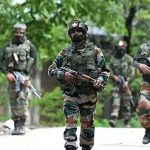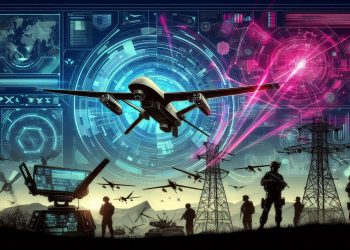Recently, the Indian Air Force announced Flight Lieutenant Shivangi Singh as the first woman in India to pilot the 4.5-generation Rafale fighter jet. This landmark achievement contrasts sharply with the proposal by US President-elect Donald Trump to potentially ban transgender individuals from serving in the US Armed Forces.
Interestingly, the concept of transgender warriors has deep historical roots. The Mahabharata mentions Shikhandi, a transgender warrior whose unique identity played a pivotal role in the battle of Kurukshetra. Due to the deep-seated bias of Bhishma, he refused to attack Shikhandi. This hesitation was instrumental in the Pandavas’ strategy to kill Bhishma, the most formidable warrior of the Kauravas. This historical context underscores how societal perceptions of gender have influenced military dynamics across cultures and eras.
Role of women in warfare has always been mired in debate essentially due to socio – cultural resistance to non-male genders being part of warfighting. The role of women in combat has deep historical roots, underscoring their ability to participate in military conflicts. Epitome of Courage against all odds like Rani Lakshmibai of Jhansi displayed remarkable courage during the 1857 Indian First Freedom Struggle, challenging conventional norms of gender roles. Similarly, during World War II, Subhas Chandra Bose’s Indian National Army formed the Rani of Jhansi Regiment—a combat force of young female volunteers, many from Malayan rubber estates, who received military training and played pivotal support roles.
Globally, women have also made significant contributions to military efforts. During the American Revolution, figures such as Margaret Corbin and Deborah Sampson fought disguised as men, proving that women have long been capable of combat and sacrifice.
The Global Perspective
Modern militaries in countries like Israel, Australia, and the UK have integrated women into ground combat roles, albeit with varying degrees of success and challenges. Within India, women have made substantial strides in the police and Central Armed Police Forces, showcasing their capability to handle high-risk and demanding roles.
Historically, however, societies have been reluctant to place women in direct combat. Cultural norms and protective attitudes have often deemed such roles too hazardous, limiting their participation. Despite this, the evolving global security landscape is gradually reshaping perspectives on women in the military.
The Current Debate
The debate over women in combat continues to polarize opinions. Proponents argue for equality of opportunity, highlighting that women constitute half the population and have already demonstrated their competence in high-risk roles such as law enforcement. Countries like the US and Israel have paved the way by formally opening combat positions to women.
Critics, however, cite concerns about physical disparities, unit cohesion, and cultural resistance. They argue that mixed-gender units may face challenges in morale and effectiveness, especially in high-stress combat environments. These arguments often reflect deep-seated societal norms rather than evidence-based assessments of women’s capabilities.
Present-Day Reality in India
As of December 2019, women accounted for only 3.8% of officer roles in the Indian Armed Forces, with no formal inclusion in direct combat roles such as infantry or armoured units. However, In the IAF, women are now flying fighter aircrafts including the latest Rafales —indicative of progressive reduction of resistance to assignment of women in combat roles in the Indian Armed Forces.
In contrast, countries like Australia have successfully inducted women into ground combat roles, and more than eight nations worldwide now allow women to serve in ground combat positions.
The path to integration, however, has been fraught with challenges. Even nations like India and China, which have historically limited women to support roles, face ongoing institutional and societal barriers to full inclusion in combat.
Challenges Women Face
Women in military roles encounter numerous obstacles, particularly in male-dominated societies. Physical demands, traditional views of masculinity, and logistical constraints, such as accommodation and hygiene in combat zones, are significant hurdles. Furthermore, deeply ingrained cultural resistance often undermines efforts to integrate women into combat roles.
However, evolving warfare dynamics—such as the blurring of frontlines in conflicts like those in Iraq and Afghanistan—have demonstrated that women are already operating in high-risk environments, often excelling in critical missions.
Opportunities for Change
The inclusion of women in combat roles can bring diversity and resilience to armed forces. Historical and global examples illustrate that women can succeed in these roles. In conflict zones such as Iraq and Afghanistan, women have earned combat action badges and demonstrated their capability in sensitive and high-stakes operations.
Countries like Israel and Australia have embraced women in combat, and public support for female soldiers in high-risk roles is steadily increasing. As perceptions about diversity and equality evolve within military institutions, barriers to integration are gradually being dismantled.
The US Experience
The United States began lifting restrictions on women in combat roles in 2013, marking a significant step toward gender inclusion. Despite some limitations, such as focusing women on protective duties, their contributions in Iraq and Afghanistan have been substantial, with over 140 women killed in action—testament to their sacrifices and commitment.
Global Comparisons and Lessons
Globally, women constitute a small percentage of ground combat troops. In Israel, they represent 33%, while in countries like Poland and Finland, the figure remains as low as 2%. While nations like France and the UK are making strides, others, including India, continue to grapple with societal and institutional challenges.
Cultural and Societal Barriers
Patriarchal norms, societal resistance, and fears about the emotional and political impact of female soldiers’ deaths in combat present significant obstacles. In India, these barriers are particularly pronounced, where women are traditionally viewed as nurturers rather than warriors.
The prospect of women being captured or killed in combat remains a sensitive issue, with concerns about public perception and the emotional toll on families and communities further complicating the debate.
Conclusion
Women have consistently demonstrated their capability in combat-like situations throughout history, but full integration into ground combat roles remains a challenge. Physical demands, cultural resistance, and logistical concerns persist as significant hurdles. However, global progress, changing societal attitudes, and the evolving nature of warfare indicate a gradual shift toward greater gender inclusion.
To overcome these challenges, military leadership must adopt gender-sensitive approaches while fostering societal readiness through awareness and education. A balanced approach, prioritizing operational readiness alongside inclusivity, will be essential for the successful integration of women into combat roles. By doing so, nations can harness the full potential of their armed forces, creating more diverse, capable, and resilient military institutions.













